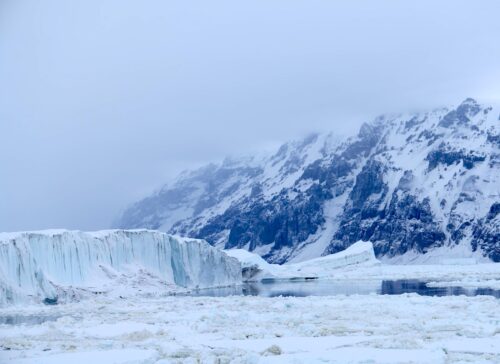
In a recent Stocktonia’s article, “The Dark Side of Pinot Noir: Climate Change Forcing Napa Vintners to Make Hard Choices,” Bay City News claims that rising temperatures driven by human-caused greenhouse gas emissions have affected Napa’s grape production season. This is false. [emphasis, links added]
Many other factors affect grape production that have not been considered or mentioned in the Stocktonia article, such as the shifting tastes of consumers, the economics of demand, natural variability of weather, and long-term effects of the nearby Pacific Ocean.
“[A] study by San Diego Scripps Institution of Oceanography researcher Daniel Cayan found that steadily climbing temperatures have advanced Napa’s grape-growing season by almost a month compared to the 1950s,” writes Stocktonia, continuing, “high temperatures reduce acids and increase sugar content dramatically, resulting in heavy, high alcohol ‘hot’ wines that maintain few of the spicy, complicated aromas and flavors traditionally associated with the grape.”
While warming trends have nudged harvest dates earlier in certain vineyards, asserting a sweeping one-month advancement across the diverse Napa wine growing region oversimplifies the reality.
In cooler sub-American Viticultural Areas like Los Carneros, the cooler marine air influence from San Pablo Bay buffers temperature swings—an influence that many growers have documented through consistently planted fog-cooled canopies.
Climate itself exhibits natural oscillations. The Pacific Decadal Oscillation (PDO) exerts multi-decadal warm and cool phases along the West Coast. Ignoring the PDO effects on nearby Napa wine country risks misattributing temporary patterns to permanent warming trends.
Further, short-term weather changes were recognized as a factor in 2024’s reduced wine-grape tonnage.
According to an expert quoted in Wine-searcher.com, “[i]t was a warm summer and there was a lot of yield taken away by the heat,” said Steve Fredricks, president of Turrentine Brokerage. “Yield per acre was light. But it’s not a bad thing.”
Economics also drives plantings. As Wine Enthusiast reported, Napa had only 2,838 acres devoted to Pinot Noir in 2016, compared with 12,527 acres in Sonoma—differences that are shaped by market demand and viticultural risk, not by climate change.
Winebusiness.com makes another point: according to the USDA California Grape Crush Report, the 2024 crush dropped to approximately 2.84 million tons—down ~25% from 2023—but remains within historical bounds and above many prior low years, such as 2004.
In addition, the 2024 Napa County Agricultural Crop Report says that although wine-grape production decreased by approximately 23,632 tons—a 13.8% decline—from the previous year, the 147,182 tons harvested that year remained 0.8% higher than the previous 10-year average of 145,999 tons.
This demonstrates that the wine-grape production remains within historical norms and is not exhibiting a steep downward trajectory in Napa County.
Adaptation, not capitulation, defines modern viticulture. Growers lean into canopy innovations and farm in cooler sites like the Petaluma Gap. Research from UC Davis demonstrates that thoughtful canopy management and reflective sprays help preserve acids and complexity, with quality Pinot Noir still achieved across varying climates.
Also, the implication that richer, fruity “hot wines” are inferior fails to consider evolving consumer tastes. As documented in an overview of New World wine styles, most Californian wines intentionally embrace a “simpler, more fruit-dominant” profile.
The state’s reliably warm climate enables the production of ripe, fruit–driven styles rather than the more restrained earthy or mineral-driven “Old World” expressions.

This shift reflects what many modern drinkers find appealing today: bold fruity notes and smoother richness.
Finally, another factor is linked to changes in consumer habits compared to decades past. A recent SF Eater article highlights a broader wine consumption decline in California and notes that as domestic consumption softens, “[i]n part because millennial and Gen Z consumers drink less alcohol.”
This trend is putting additional pressure on local producers by reducing demand and is exacerbated “in part as the alcohol market widens to include hard seltzer and canned cocktails.”
The article also points to a peak in wine demand during the 2020 pandemic lockdown, but demand has since decreased.
In addition, the U.S. Department of Agriculture reports that Pinot Noir grapes are more sensitive to various stressors than other grape varietals.
Yields are typically 20 to 30 percent lower for Pinot Noir grapes than for other varietals due to diseases, pests, and environmental stressors, especially water availability.
Pinot Noir has a shallow root system, making it highly dependent on irrigation, which in California has become a problem in recent years with reservoir shortages, droughts, aquifer decline, and more water being reserved for urban uses and left in the rivers and streams themselves to protect endangered species.
All of these particularized issues factor into recent problems faced by Napa’s pinot grape growers.
By reducing centuries of viticultural nuance, historical yields, crop sensitivity, economic context, and adaptive innovation to a single climate scare story, Stocktonia and Bay City News grossly misled their readers.
They ignored natural oscillations like the PDO and overlooked economic drivers, including higher production costs related to Pinot grapes due to their demanding growing conditions, which shape Pinot plantings.
The story also ignores the proven adaptability of growers. Instead of honestly examining these factors, Stocktonia and Bay City News chose to hype a non-existent climate change connection and foment fear.
In the end, this wasn’t a serious look at Pinot Noir but a warmed-over fable that belongs more to Steinbeck’s Grapes of Wrath than to modern viticulture. Only this time, the wrath comes not from the climate, but from sloppy reporting.
Top photo by Tim Mossholder via Pexels
Read more at Climate Realism


















